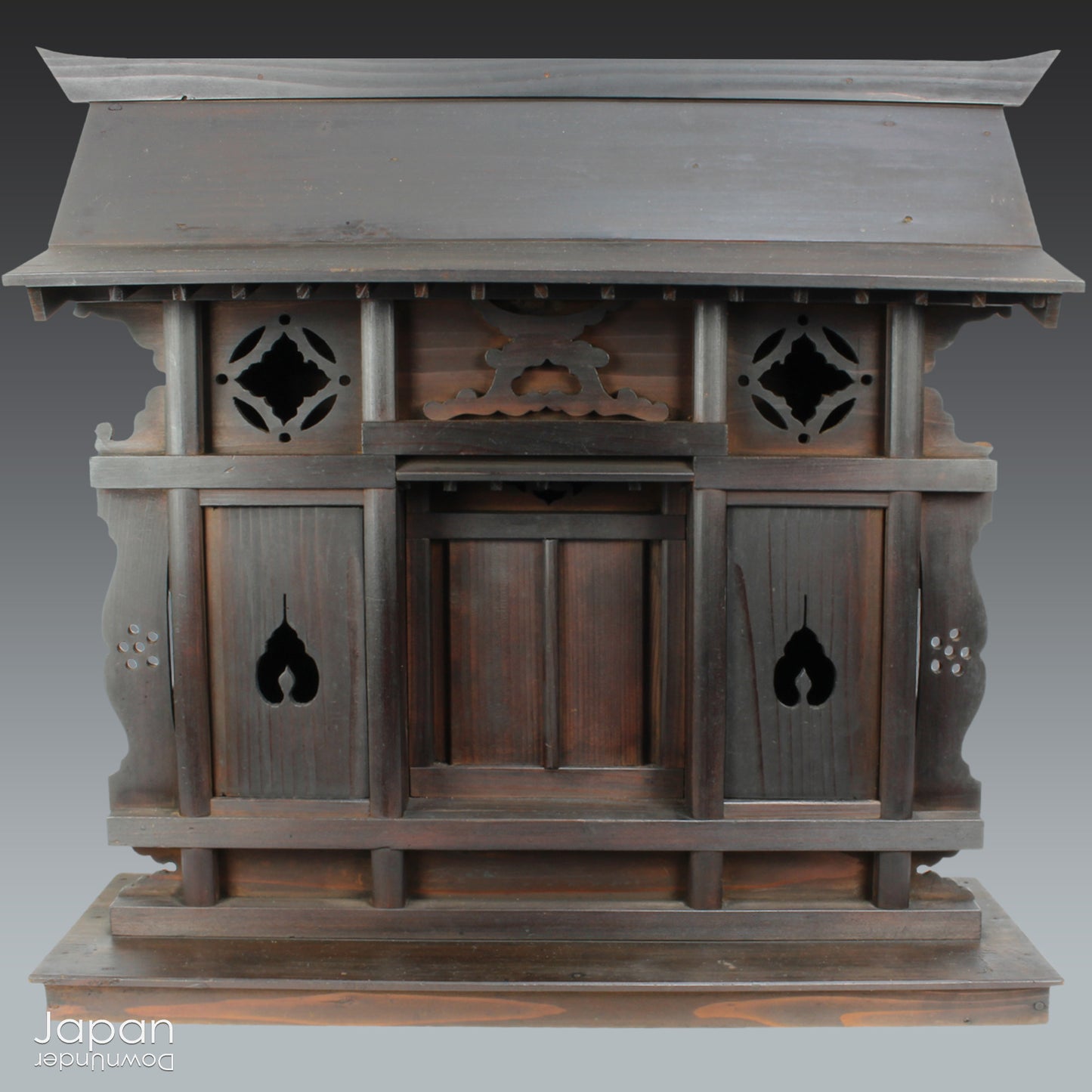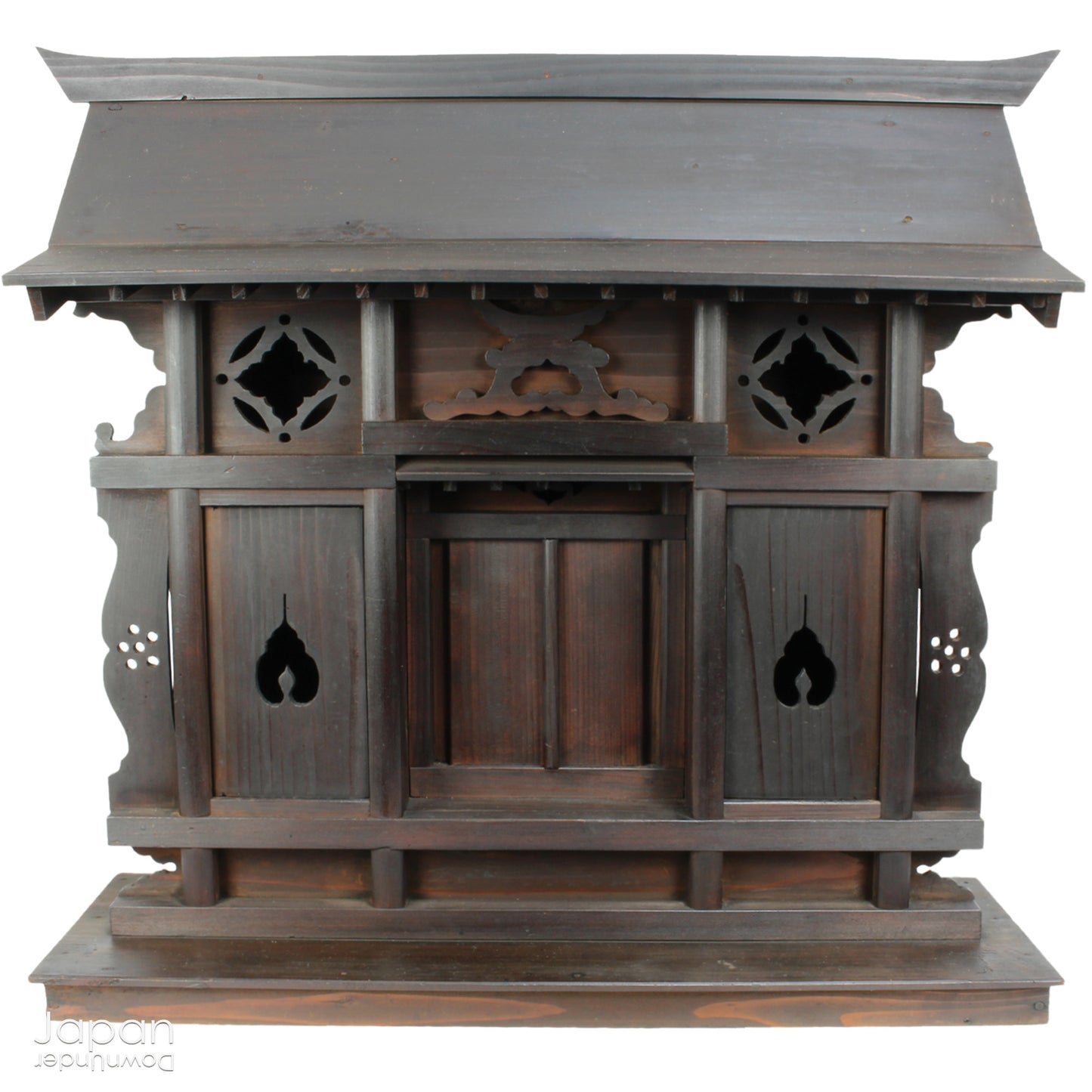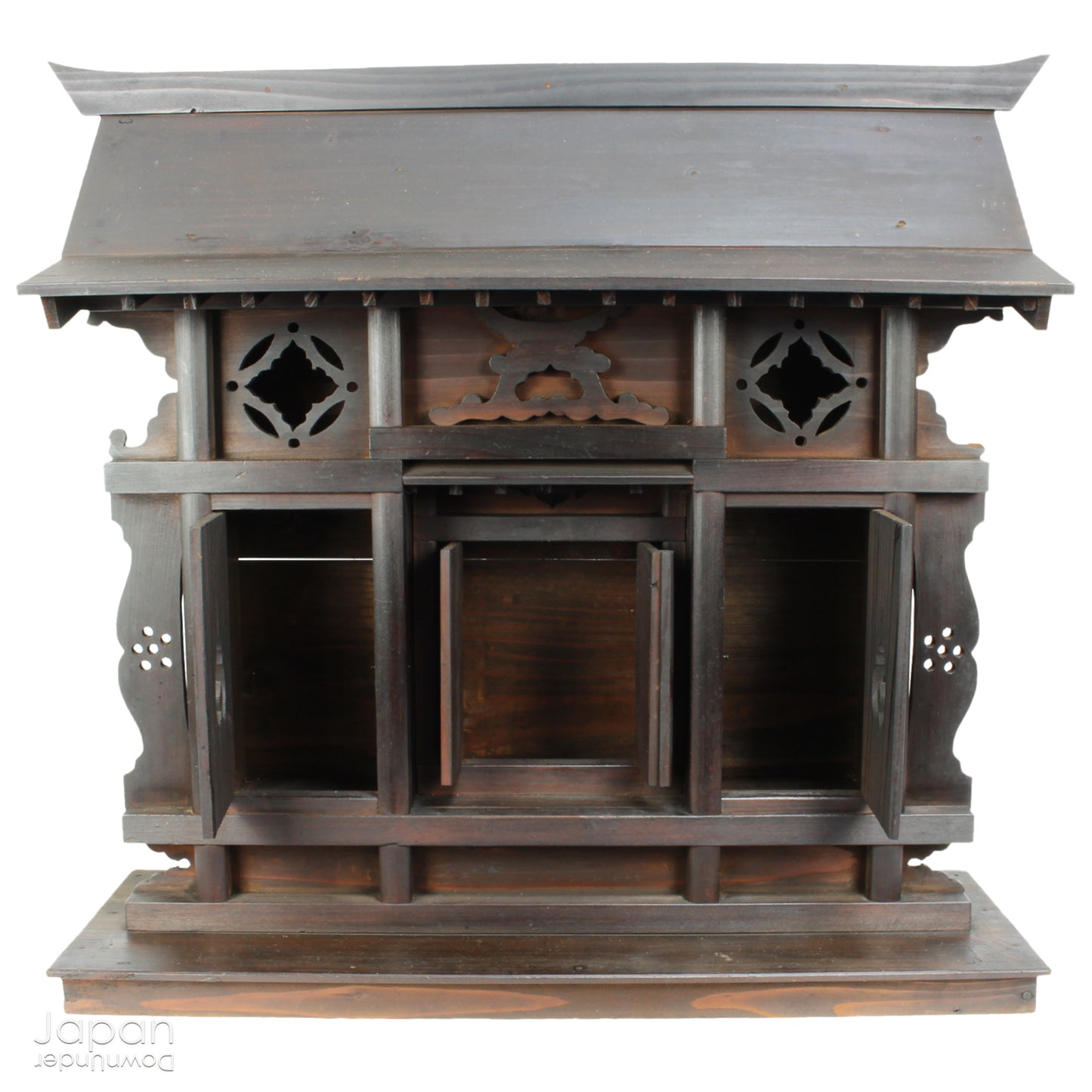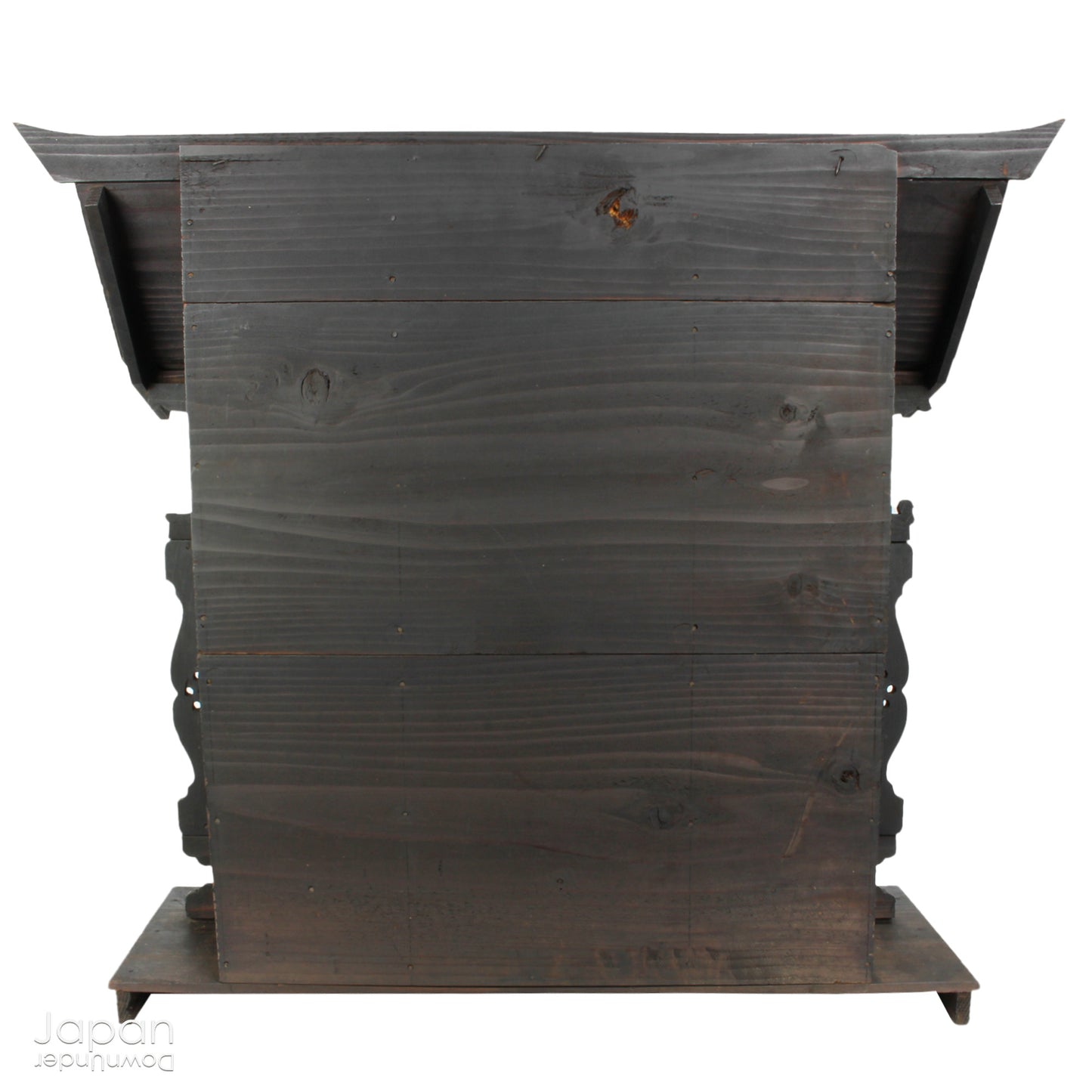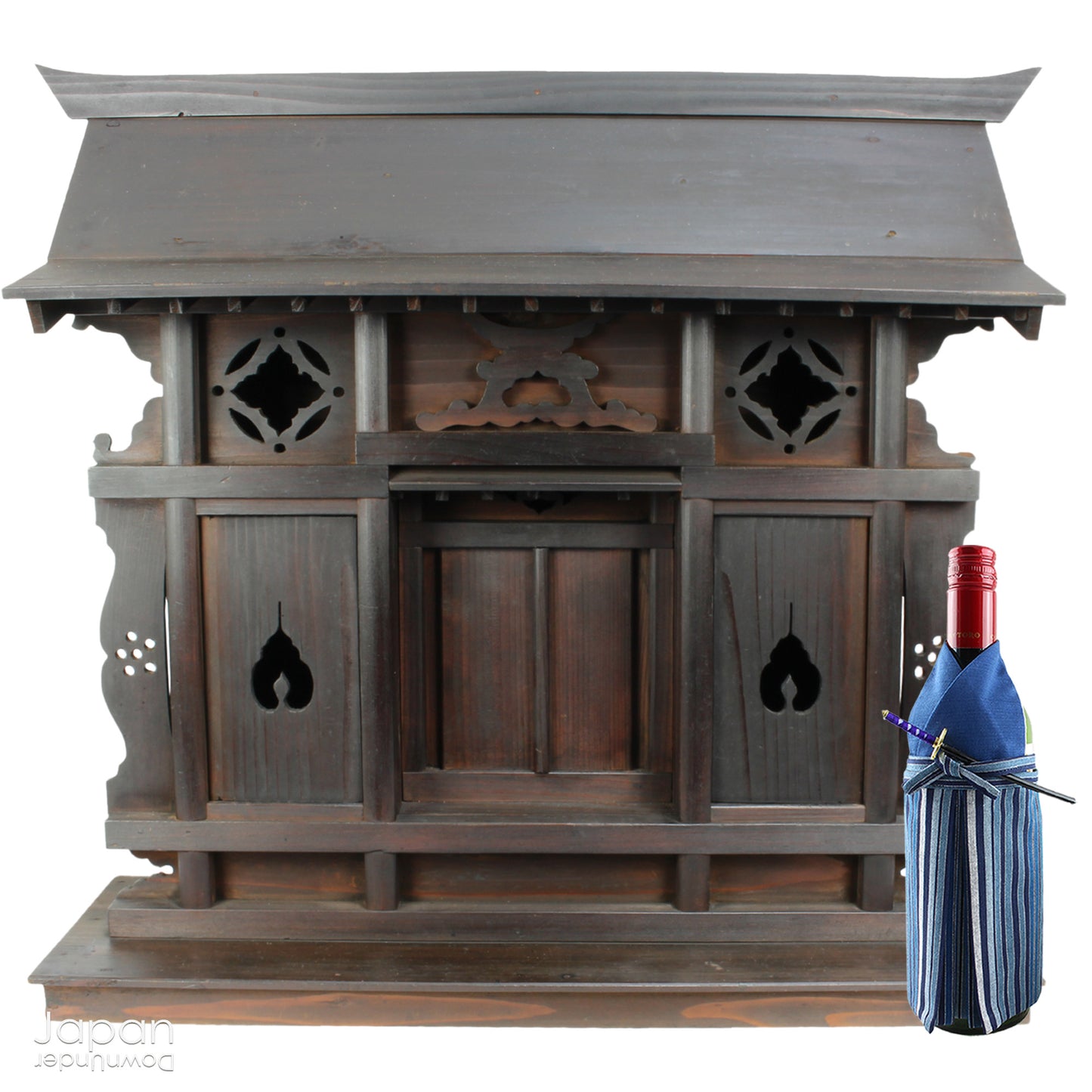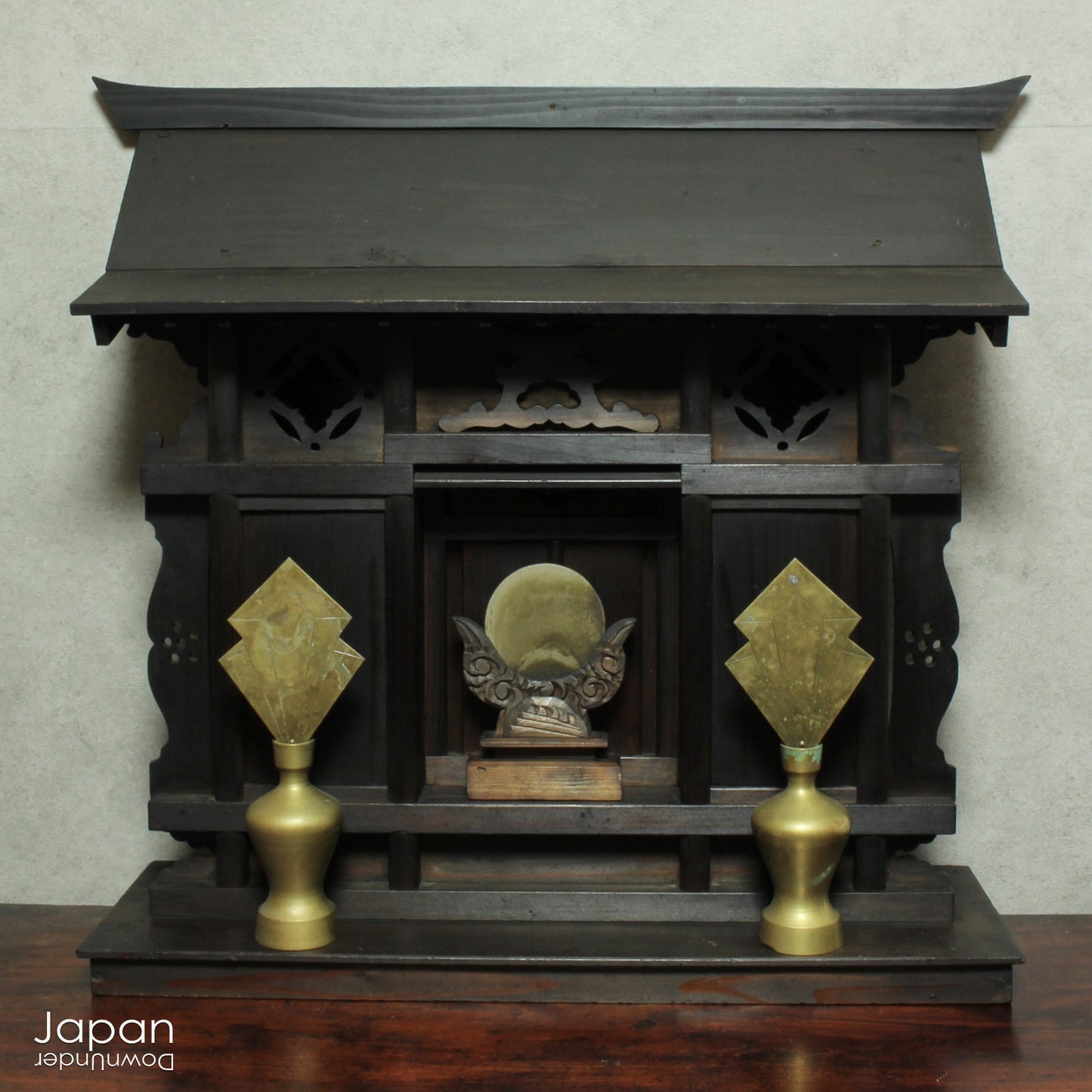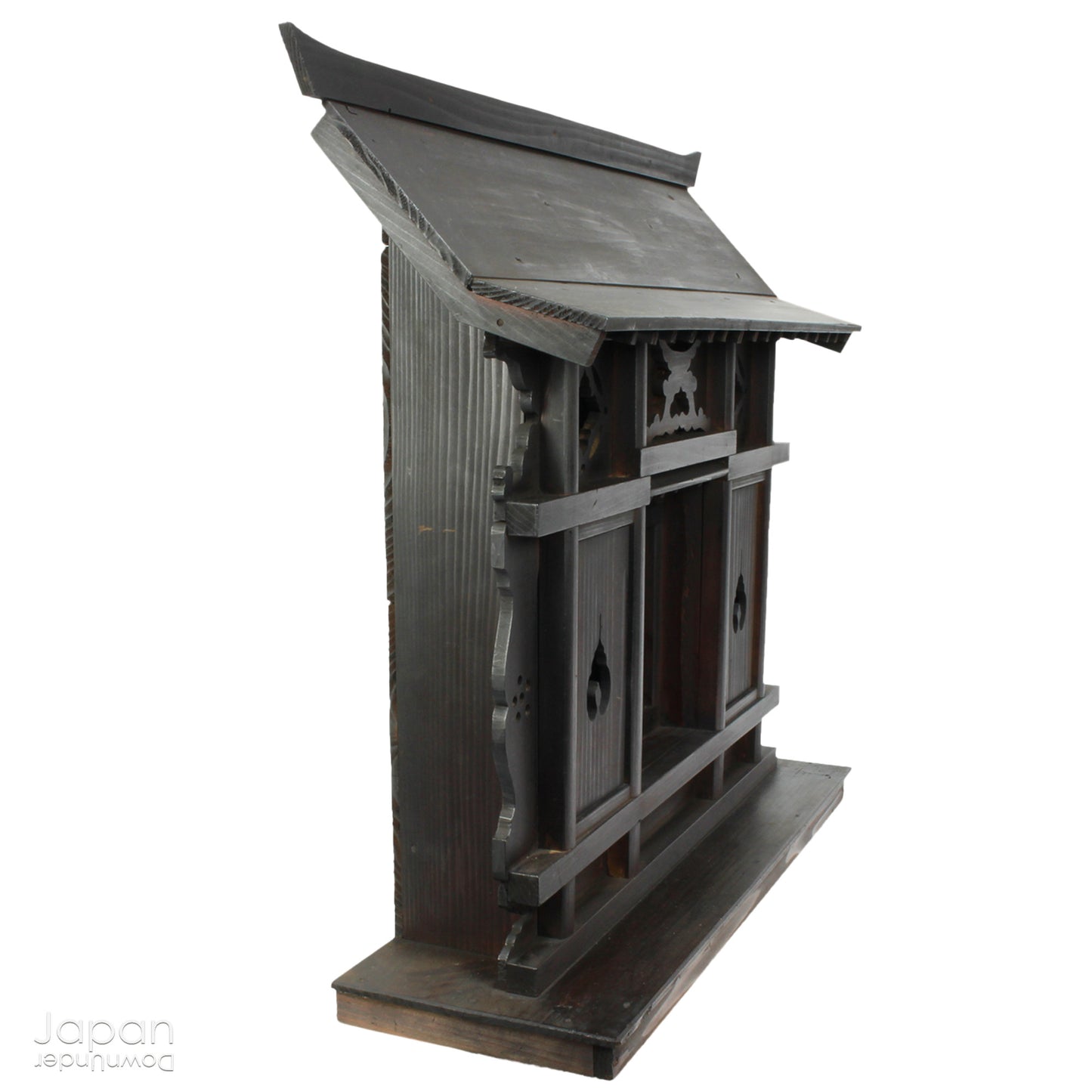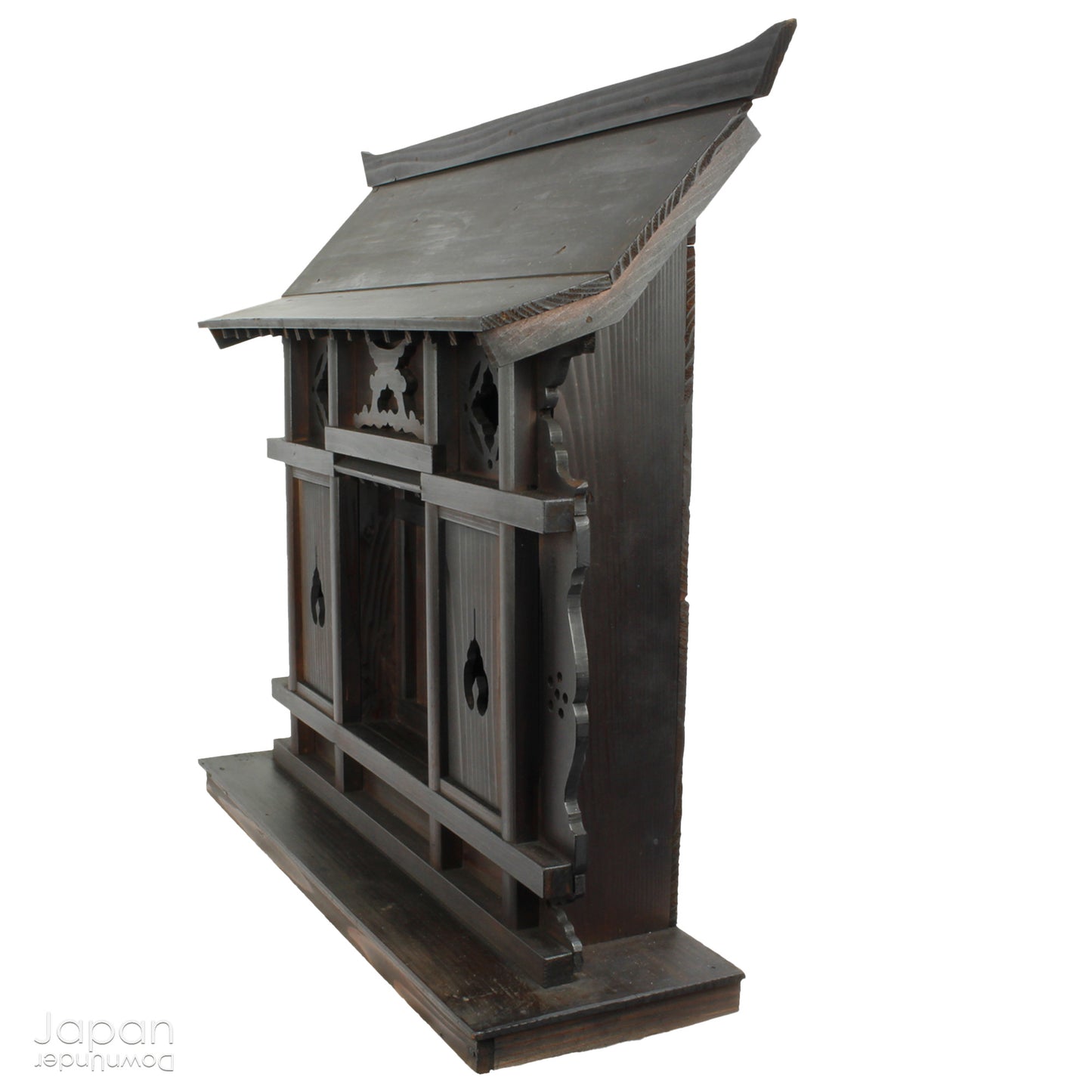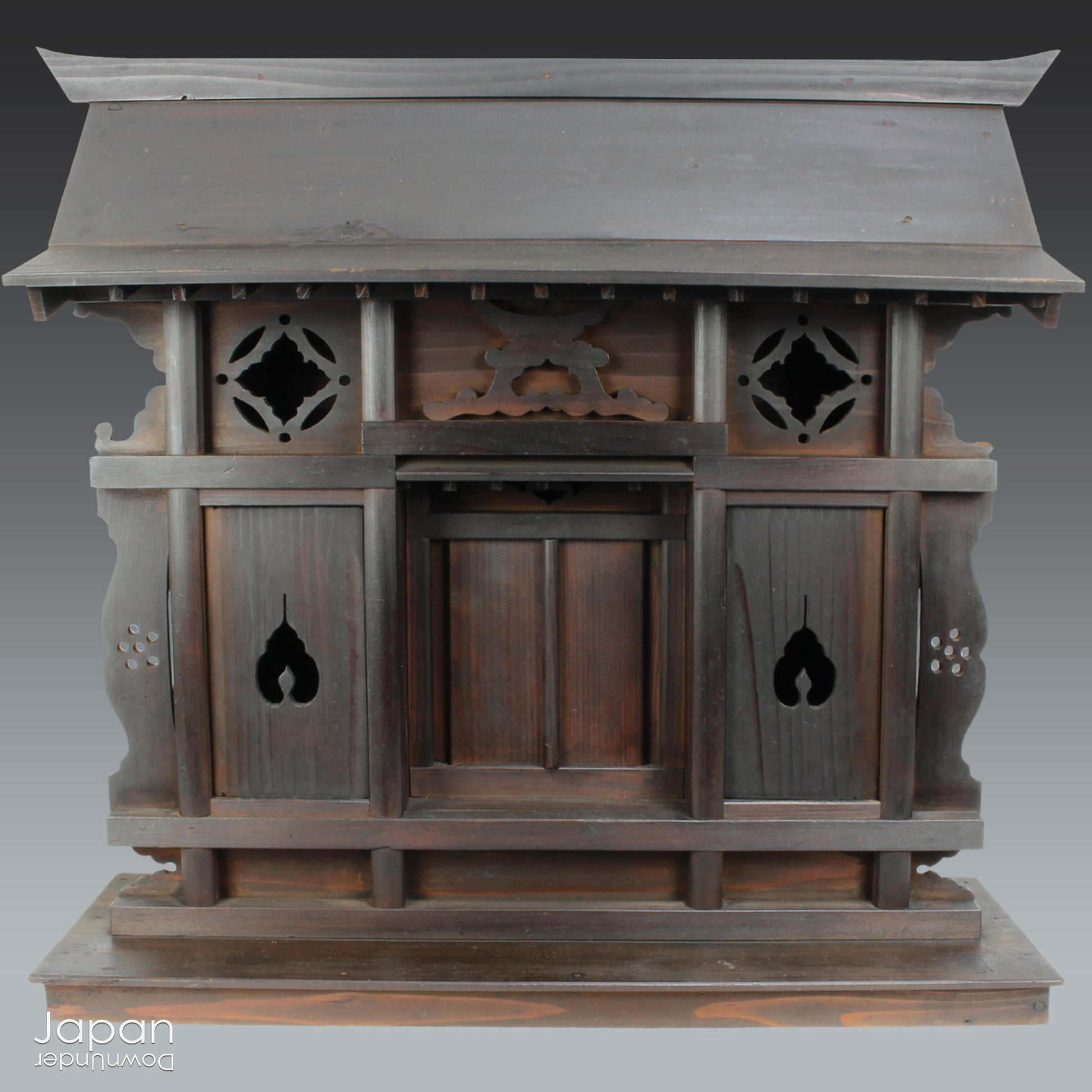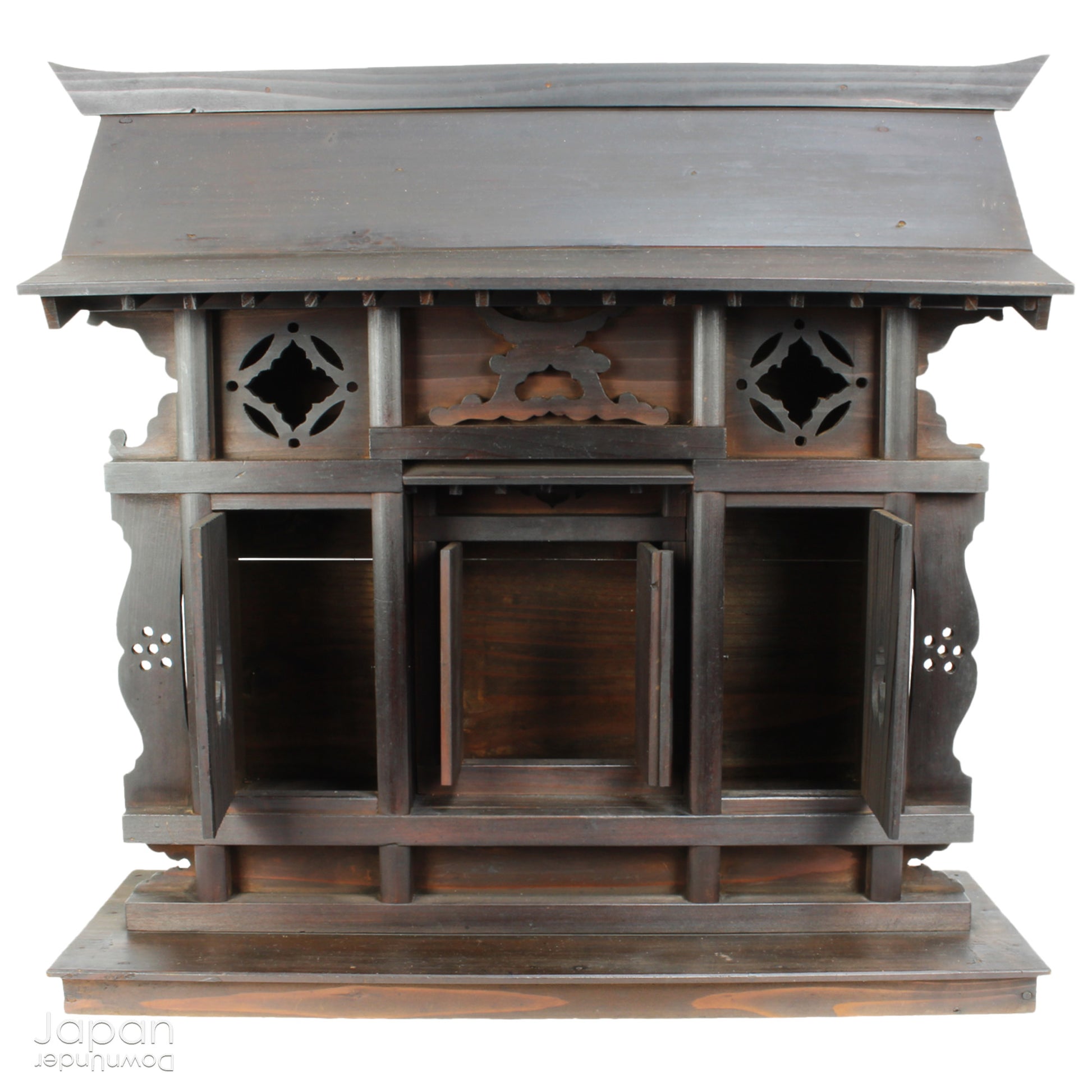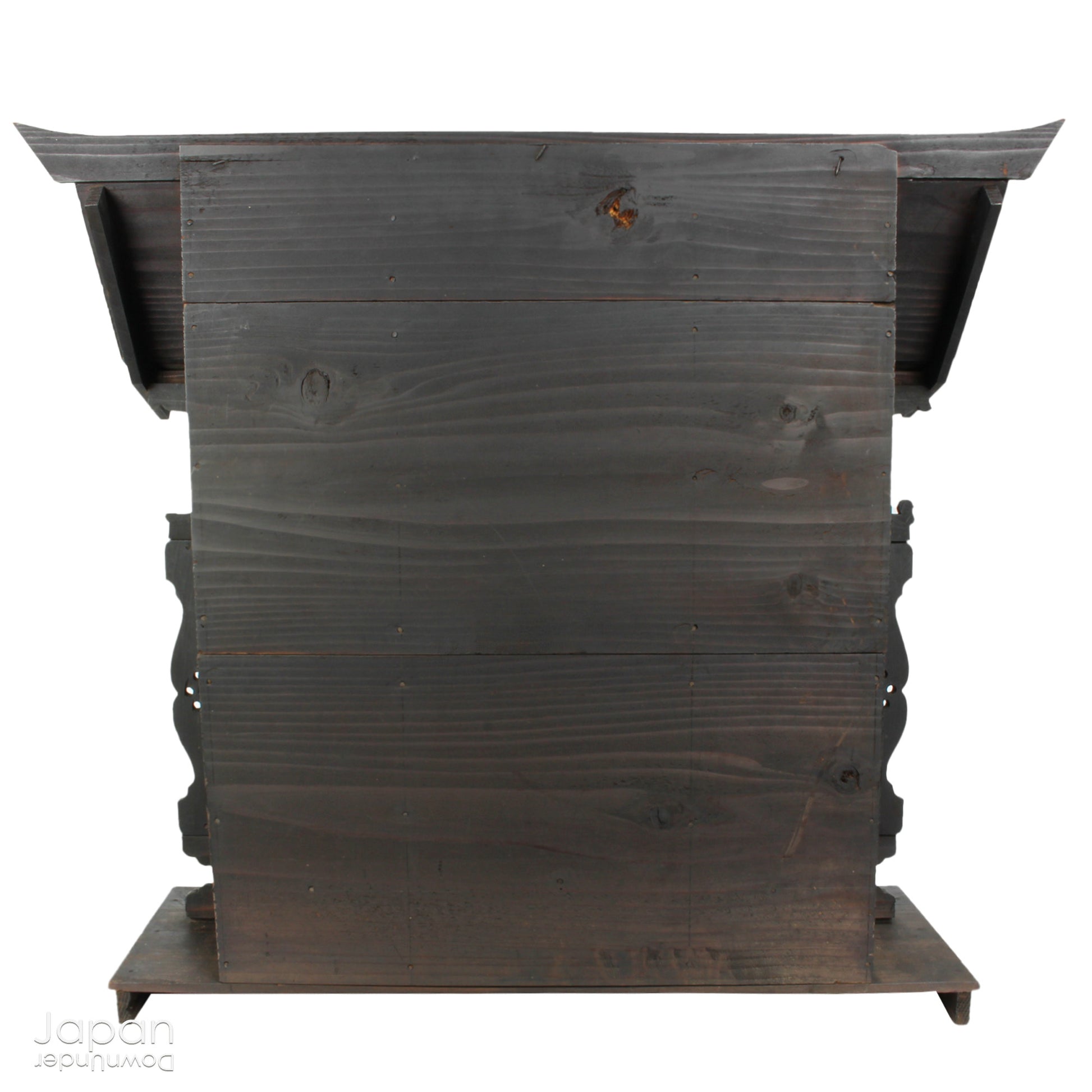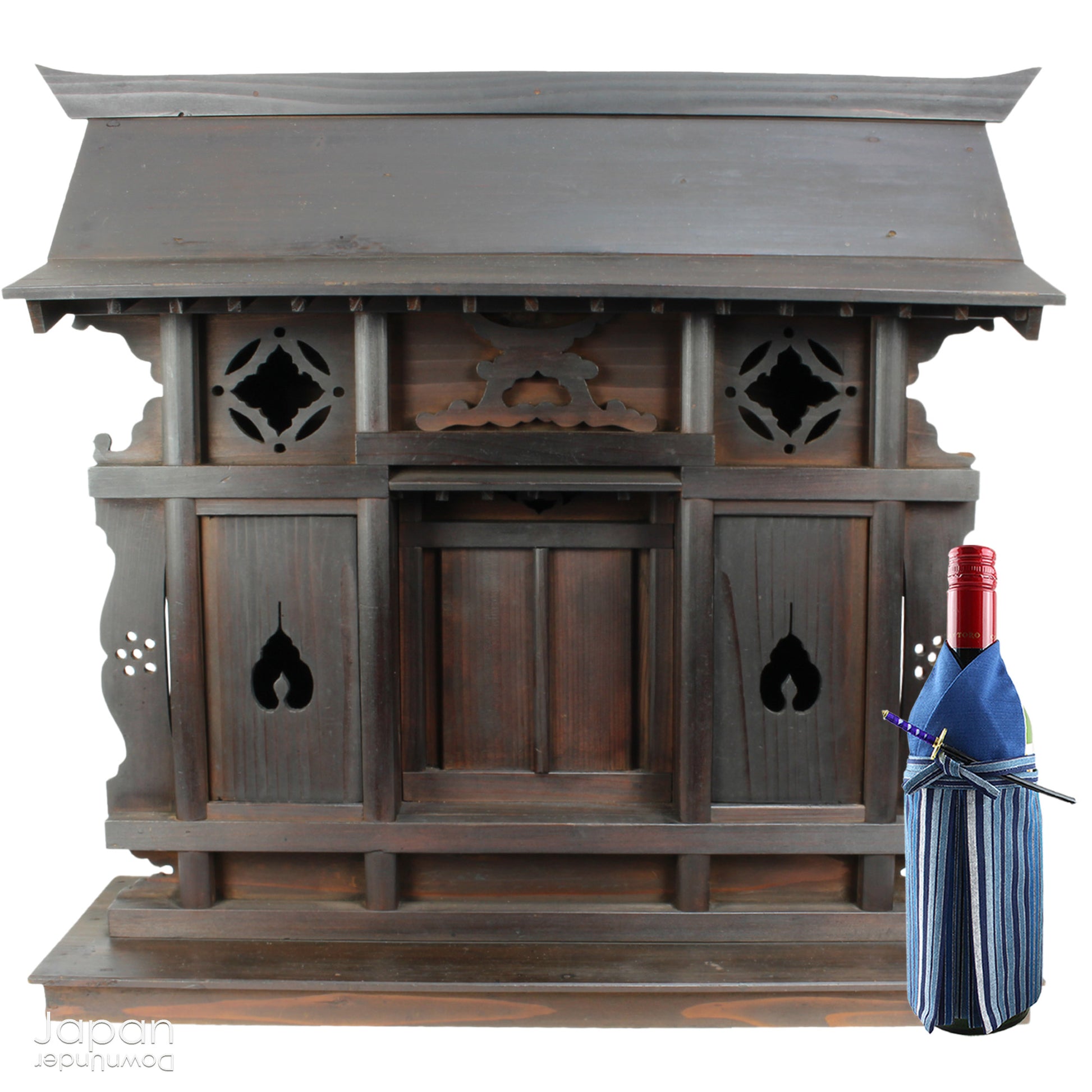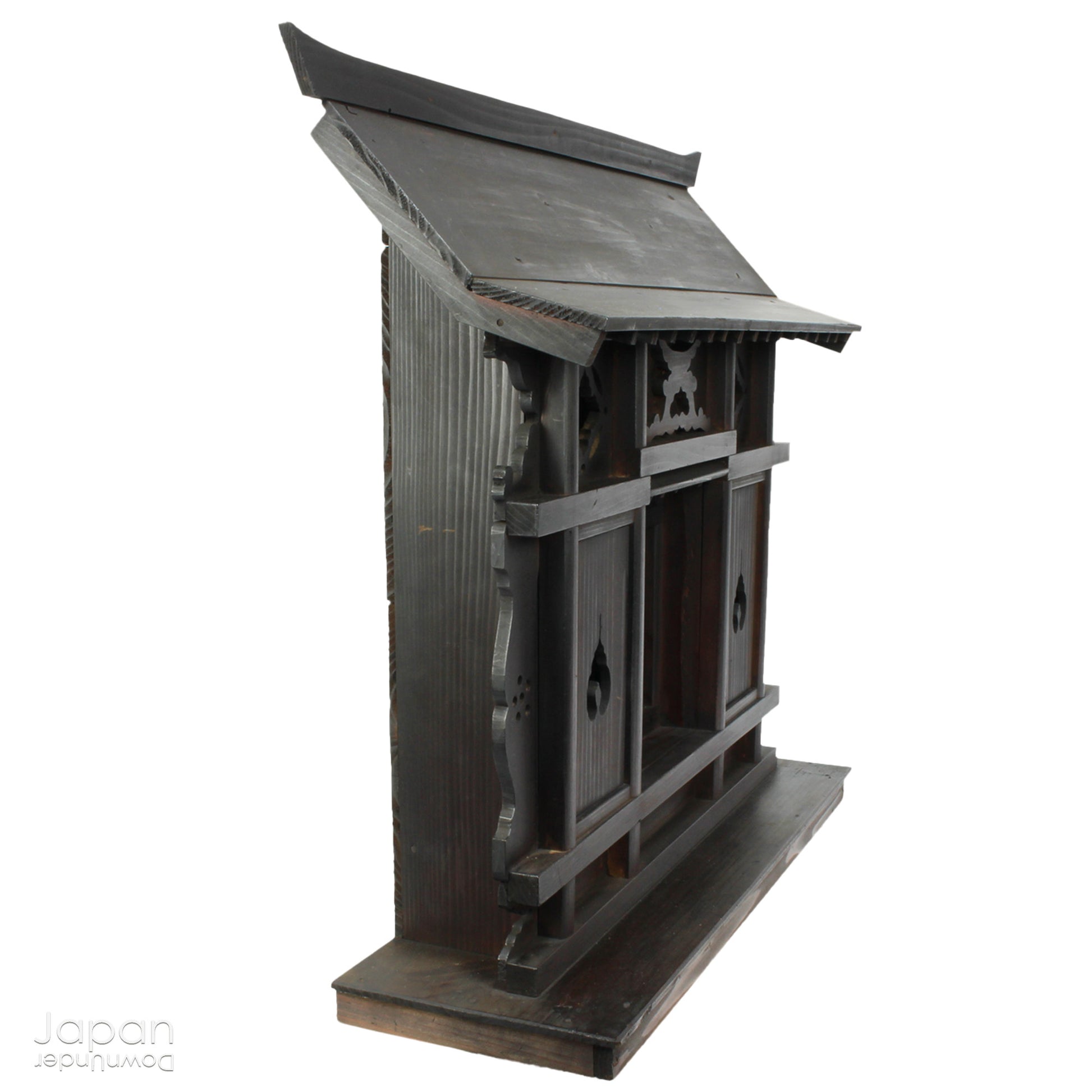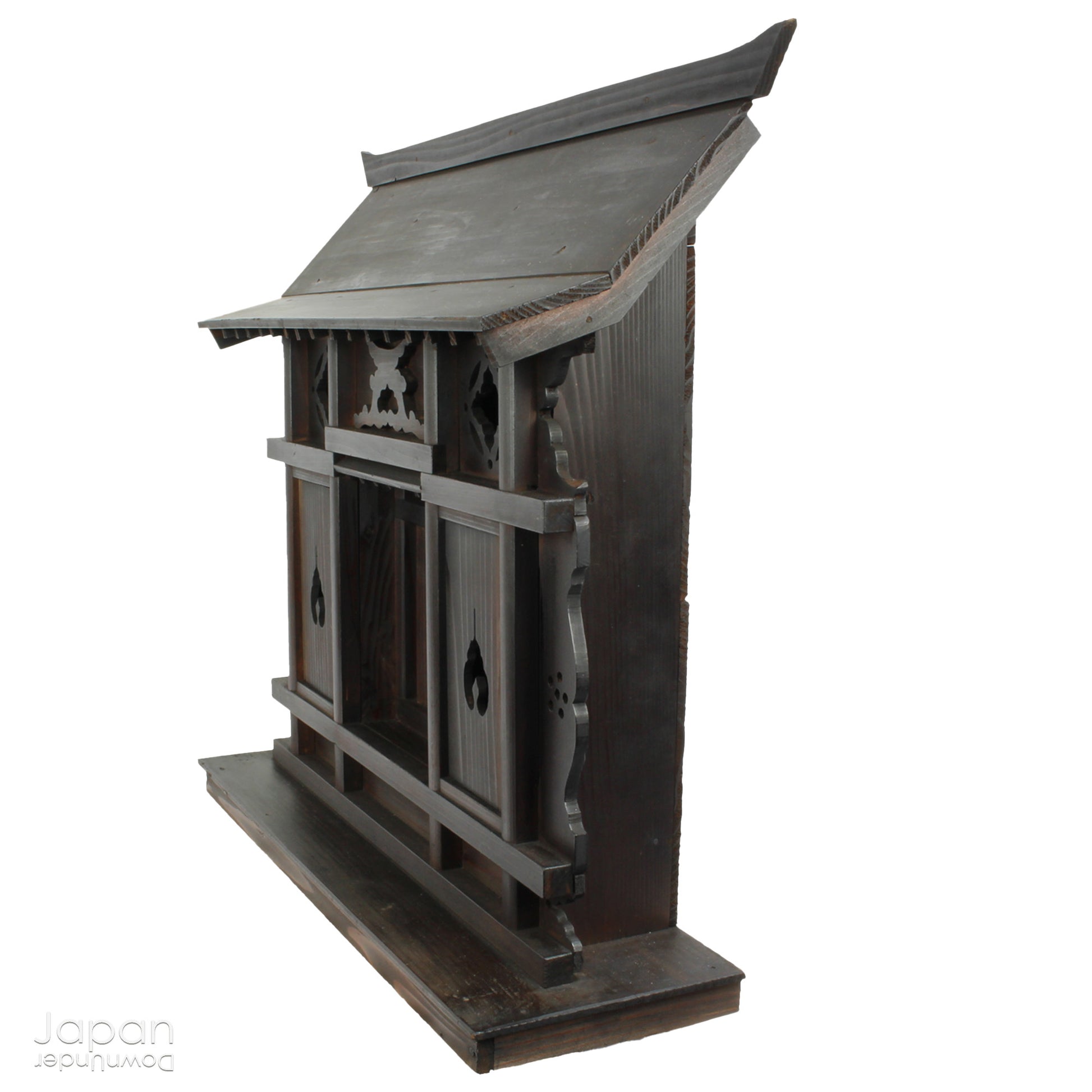JapanDownUnder
large japanese antique kamidana shinto shrine - spiritual folk art
large japanese antique kamidana shinto shrine - spiritual folk art
Couldn't load pickup availability
Love Japanese Style Like We Do
This exquisite antique folk art kamidana shrine radiates a serene rustic charm, poised to bring a peaceful, spiritual touch to your living space. Meticulously crafted with intricate detailing and a timeless aesthetic, it’s an ideal treasure for collectors or anyone passionate about unique, meaningful decor. Invite a captivating piece of Japanese spiritual history into your home - one that naturally sparks conversation and admiration.
The tradition of kamidana became widespread in common households during the middle Edo period (1603–1867). It began when Shinto priests from Ise-jingu Shrine distributed ofuda - sacred paper charms believed to embody the divine power of the shrine’s revered deity. To honor these ofuda, households created kamidana, small altars designed as a dedicated space for prayer and reverence.
The kamidana consists of two essential components: the shelf and the small shrine that houses the ofuda. Each shrine typically features one or three doors, each with its own specific arrangement for the ofuda.
Sourced from an authentic Japanese minka (traditional country farmhouse) in Ibaraki Prefecture, this impressive folk faith shrine is notably larger in size but maintains a shallow depth, reflecting the narrow shelves typical of minka kamidana. It has three openings in which the ofuda of the local guardian god, the ofuda of Ise-jingu Shrine, symbolizing Amaterasu Ominokami and the ofuda of worshipper’s shrine would have been placed.
Handcrafted from light Japanese cypress wood, the shrine is adorned with elegantly simple cut-outs on the sides, the two side doors, and beneath the roofline. Its darkened patina speaks to the passage of time, exuding the warm, rustic essence of Japanese mingei folk craftsmanship.
Structurally, the shrine is in good condition given its age, with only minimal wear that adds character rather than detracts. A small decorative circle above the right door is missing, and a few slender wooden slats are absent beneath the large roof and the smaller roof above the center door - subtle imperfections that only enhance its authentic vintage appeal.
This one-of-a-kind treasure is not just a decorative piece but a heartfelt connection to centuries of Japanese spiritual tradition and folk artistry. Whether displayed as a unique focal point in your home or cherished as part of a thoughtful collection, it offers a rare glimpse into the soul of Japan’s cultural heritage.
- measures around 64 cm (25.2”) across x 56 cm (22”) tall x 18 cm (7”) wide.
- weighs 2,130 gm
(listing for kamidana shrine only)
SHIPPING INFORMATION
- please read our shipping notes in shipping policy.
- we use recycle packaging wherever possible and wrap for safety, rather than appearance!
ABOUT OUR VINTAGE, ANTIQUE AND OTHER ITEMS
We list pieces we feel are worthy of display. There may be scratches, dents, fading and signs of wear and tear. We try to explain the condition of each item exactly, but may miss something.
Information regarding the item and it’s age is obtained from dealers and our personal research. We do our best to give you the correct information but please be aware that we cannot guarantee this information.
Please message us prior to purchase with any questions you may have about our products.
KAMIDANA
Kamidana, literally god shelf, or sacred shelf, are miniature household altars used to place an enshrined Shinto kami (god). Paper talismen, kamifuda and amulets, issued by the major Shinto shrines, were enshrined for worship to the kami. They became popular in traditional country style minka houses.
Small shrines for tutelary deities, inside a residence, go back to ancient times among the aristocracy. The emergence of the kamidana was closely connected with the development of the domestic Buddhist altar or butsudan, which started the movement of conducting religious rituals in each household.
Kamidana were initially set up to keep Jingu Onusa, charms of the Grand Shrine of Ise, when they began to be widely distributed at the end of the Muromachi period. The Jingu Onusa symbolized Amaterasu Omikami and were considered objects of worship. A special domestic shelf, to respect these charms, was installed and was called Jingu no tana, or shelf of the Grand Shrine. By the mid-Edo era, the institution of the kamidana had spread to most homes as a result of the spread of this Ise cult.
The most common style of kamidana was a plain board forming a shelf, supported by cantilevered brackets from beneath, or stabilized with timber hangers, suspended from the beams above. On this shelf a miniature Shinto shrine was installed to contain the kamifuda. This shrine could be elaborate in design, but unlike the miniature shrine cabinet, or zushi, of the Buddhist altar, the timber was unlacquered. The kamifuda enshrined was that of a clan deity or came from one of the major national shrines.
Kamidana were most often located in a high place, thought to be closest to the heavens and gods, in an area close to an earth floor. As old country kitchens had an earth floor and were a place where many people gathered, they were perfect for the kamidana and prayer. Candles were lit and offerings of rice, fruit, fish, rice and wine were made daily.
Particularly in the homes of farmers, fishermen, merchants and other craftsmen, additional deities with combined Shinto and Buddhist identities found their way to the kamidana. Ebisu and Daikoku-dana were popular. Ebisu, the god of fishing and Daikoku, the god of farming, were particular favorites amongst country folk, whose livelihood depended on agriculture and the ocean. Ebisu and Daikoku were often housed together in a special shrine with a rounded roof, and came to be known as the kitchen gods. Kojin-dana was another popular choice. Kojin was the god of domestic tranquility and good fortune. Inari-dana were also seen. Inari is the Japanese Shinto god who watches over and protects the rice harvest. A temporary toshitoku-dana was set up in almost all homes at the end of the year to welcome and worship the kami of the New Year.
Old Kamidana shrines are a wonderful example of Japanese mingei; a spiritual tool that reminds us of culture and customs of the past.
Share
